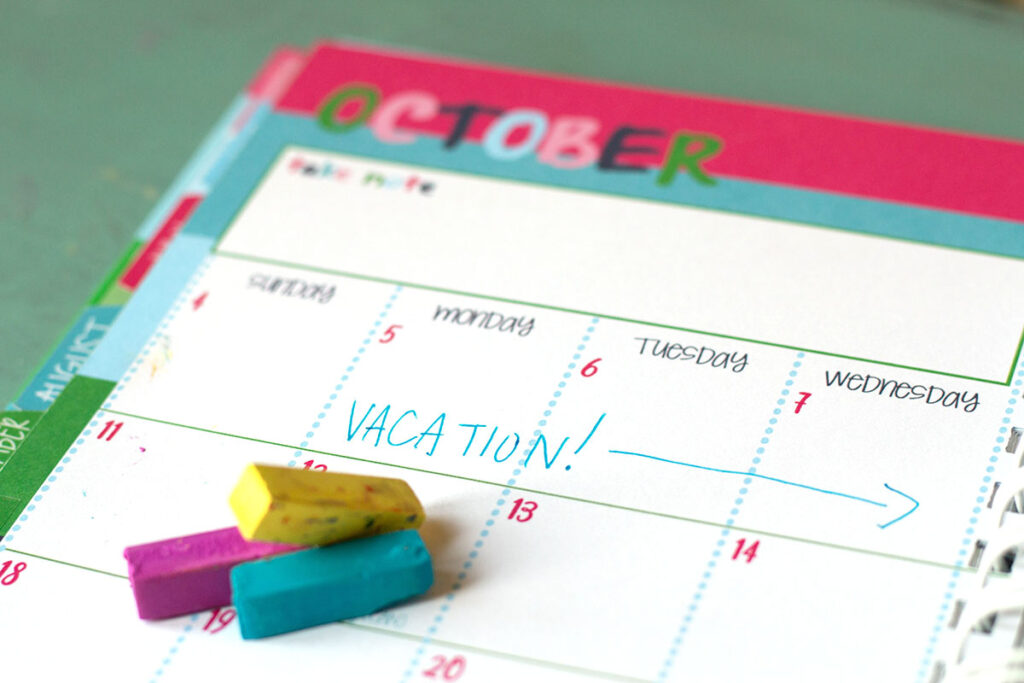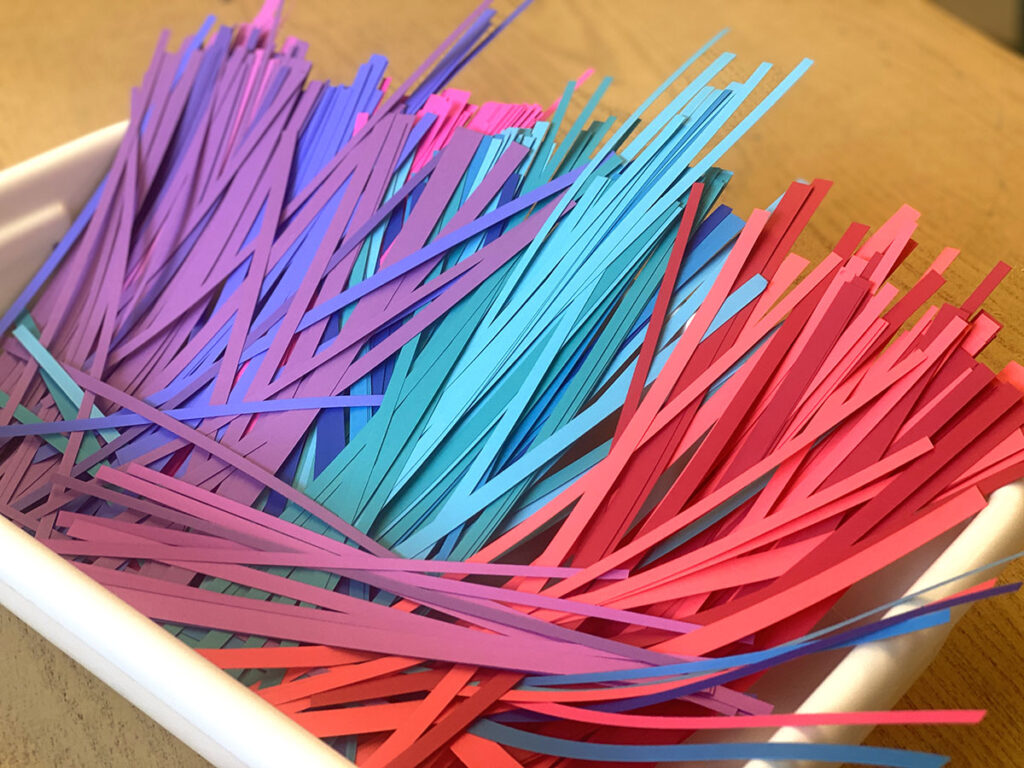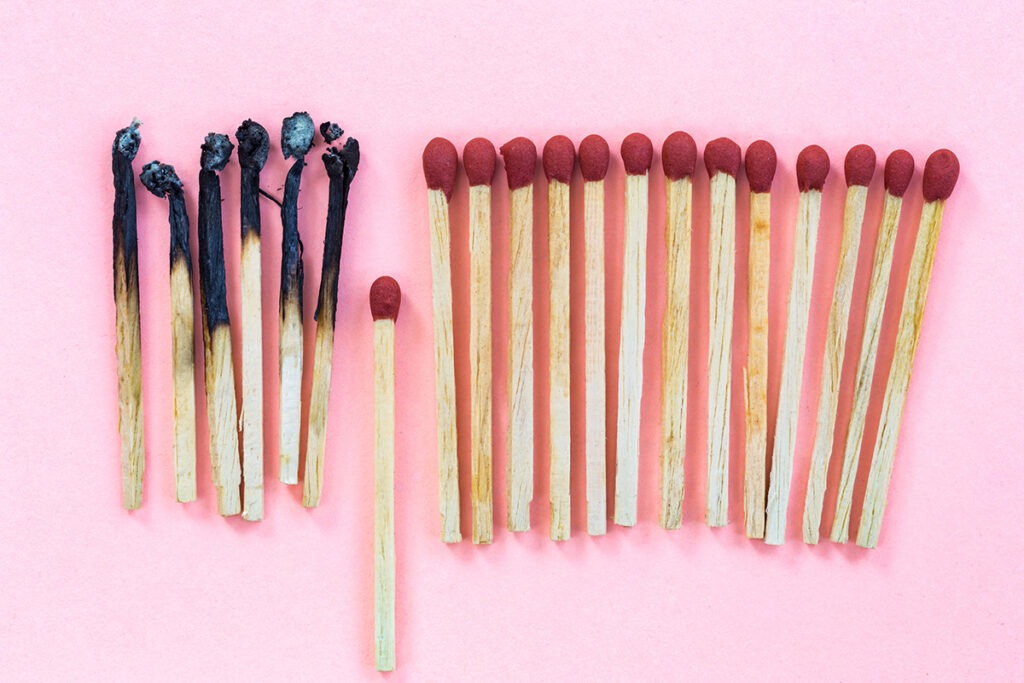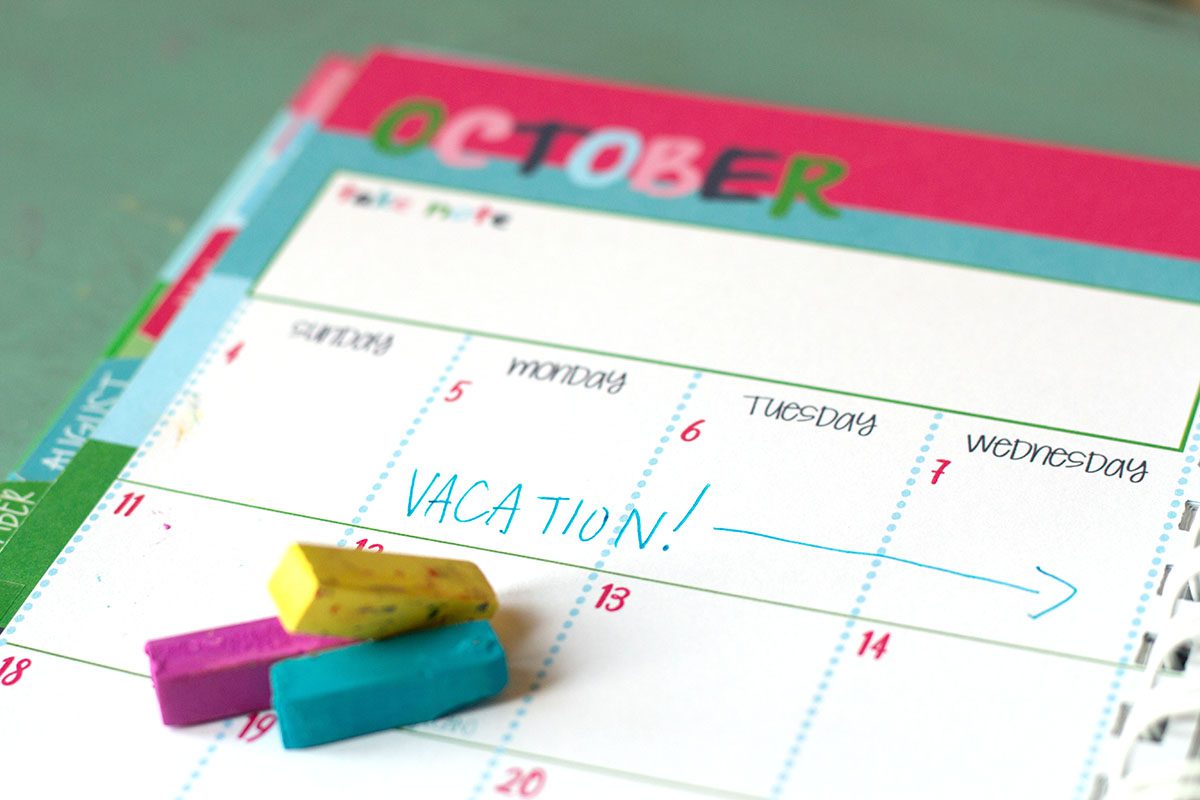Teaching is one of the few occupations where we have to plan for our absences. Imagine having a job where taking the day off means you can be gone—no substitute plans and no pre-planning—just a day off. It sounds like a dream, right? Unfortunately, this is not the reality for educators. Using your leave is even more difficult in the art room as you have many different materials to prep or put away. You also may have to accommodate a substitute who may be intimidated by your classroom and content area. You may even have more sections and classes to plan for than other core subject teachers.
A 2018 study found that Americans left 768 million vacation days unused. That’s 55% of people not using their leave time! Teacher “vacation days” or paid time off (PTO) vary in comparison to other occupations. They typically come in the form of sick or personal days. The average teacher contract is approximately 180 days. The paid 180 days do not include winter, spring, or summer break. A 2012 study found that the average leave time for teachers is approximately 13 days per year, which includes both sick and personal days.
Have you ever gone a whole school year without taking a day off? Do you ever feel guilty when you do take time off? Yet, you might find yourself constantly longing for that random early dismissal, a federal holiday, or summer break—stressed and overworked as exhaustion creeps in. It’s hard to be a teacher. And, while it does take a little extra work to prepare for an absence, you shouldn’t feel guilty.
If you find yourself having a pile of unused days in your bank, consider the items outlined below.

Make sure you understand your school district’s contract.
While many of the practices in schools regarding leave time are similar, they are not universal. For this reason, it is imperative to know and understand your contract! Some school districts give employees an overall pool of days they can use as desired. Some allow a certain number of personal versus sick days. On top of this, your school district will have information regarding bereavement, family illness, jury duty, and more. These absences may or may not come from your pool of days.
In addition to understanding the basics of your leave time, here are a few additional things you will want to consider:
- How many days carry over each year?
- How long do you plan on staying in your district?
- Will your district buy back unused days?
Let’s tackle the importance of knowing the answers to each of these 3 questions.
1. Do your days carry over?
It is good to know if you will lose your time if you don’t use it. For example, let’s say you get two personal days per school year but only one of them carries over to the next school year. If you don’t take the other personal day during the year, you will lose the time. If you will lose the time, make sure to take advantage of anything that will not carry over.
2. How long will you stay in your current district?
If you don’t plan on staying in a school district for a substantial amount of time, you will want to be aware of longevity policies. If you have worked at a school district for a few years and decide to leave, you will potentially lose any leave you have accrued. This can be very disappointing! Some districts will pay you back for unused leave, but there is usually a “time in district” requirement.
3. Does your district buy back unused leave?
Some school districts will buy back unused leave time. This can occur annually for all employees with a compensation rate. Depending on your school district’s policy, it might be limited to buying back personal days as opposed to sick days. A buyback of days usually occurs upon retirement; however, districts will typically cap the number of days they will compensate. Be aware of how many days your district will buy back to ensure you are maxing out compensation but aren’t losing your time.
Let’s go over 3 solid reasons why you should use your leave.
Knowing how your leave time works is important, so use that understanding to take a day off! With 55% of Americans not using their leave, it’s easy to see why we might feel overworked and stressed. It is usually more work to plan for an absence, but don’t let that hold you back. With a bit of planning, taking some time off will benefit you.

1. It’s your time—use it wisely.
When it is all said and done (despite restrictions), your days are your time—use them! Unfortunately, teachers don’t work in a flexible work situation where they can run to a doctor’s appointment for an hour during the day and flex that time later. Scheduling these types of appointments can be a nightmare if it’s not on a day off from school or summer break. A mid-morning appointment that has you driving to school, to the appointment, and back to school isn’t worth it. Be smart with your sick time use and make the most of it.
There will be situations where you want to accrue days. If you have children or care for other family members, saving those days for emergencies or an anticipated extended leave is smart. Maybe you plan to build up your days to go on your dream vacation and don’t want to fight the crowds during a spring, summer, or winter break. Whatever the case, use or save your days with purpose.
2. It benefits your mental health.
Research consistently shows the health benefits of taking time off. Improved productivity, lower stress, and better mental health are just a few of the results. However, some of the reasons we don’t take time off are guilt, fear, and school pressures. We all know that a substitute teacher isn’t going to teach our students the same way we would. We don’t want to stop artmaking mid-unit or get our classes out of sync. While the guilt is real, you can’t forget your own needs. We are constantly there for our students—responding to emails and grading outside of contractual school hours. Let yourself off the hook when it comes to an occasional day off.
Even when you take the day off, you might still feel the pressure to check your inbox and respond to emails or messages. Try not to! It might even be a good habit to take your work email off your phone. Research shows that mentally disengaging from work can improve overall health.
3. It decreases burnout.

The American Psychological Association shares that taking breaks can increase our overall well-being. Teachers who take the occasional mental health day for time to relax, make art for themselves, catch up at home, or not think about work, are less likely to experience burnout. This time away can improve your overall attitude and give you more energy and productivity in the classroom.
When you get on an airplane, the flight attendants always instruct you to put your oxygen mask on before assisting others. The same logic applies to teaching. If you aren’t filling yourself up first, how will you have anything left to give to your students?
Taking time off from school is never going to be easy, but sometimes it is necessary. Once you understand how your leave works, use it because you earned it! Use it to catch up on housework, make art, stack doctor’s appointments, disconnect from work, go on a vacation, or save toward an anticipated long-term leave. Being smart and proactive about taking your leave improves your mental health and reduces your risk of burnout. Let’s take care of ourselves to be fully present for our students as they explore and experience art this year!
Check out these resources to help you plan for your next day off:
- 5 Simple Sub Plans to Make Your Life Easier
- How to Simplify and De-Stress Your Sub Plans This School Year
- 5 Exciting Sub Plans for Right Now
- The Easiest Way to Leave Sub Plans
- How to Flip Your Sub Plans
- Planning for Substitutes
- The Perfect Sub Lesson for Any Grade Level
How many days off from school do you take each year?
What holds you back from using your leave?
Magazine articles and podcasts are opinions of professional education contributors and do not necessarily represent the position of the Art of Education University (AOEU) or its academic offerings. Contributors use terms in the way they are most often talked about in the scope of their educational experiences.





